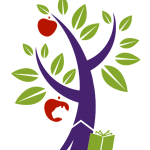Home Education Approaches
On this page, you will find a range of approaches to home education. You do not have to choose one of these approaches – we share them for inspiration, resources and to illustrate the many different ways people home educate. The majority of home educators fall into the ‘eclectic’ category, which essentially means doing whatever works best for your family without choosing one particular philosophy to follow.
Investigating these approaches can also help you gain clarity about your family’s educational philosophy. Working out what your family’s values, priorities, and principles are when it comes to education can lead to a more consistent home education journey and one where everyone’s needs are met.
In this article, Beverley Paine shares her home education philosophy, and this article provides a list of useful questions that you can use to create your own statement of beliefs, values, and goals for your home education. It’s not a requirement of homeschooling, but it’s worth spending some time to think about what matters most to your family regarding education, what the purpose of education is for your family, and what you believe about how children learn.

Eclectic
Many families will find that no one specific method will meet the needs of their family completely. Different approaches may work for different subject areas or different children.
Parents may like the ideology of one method but wish to incorporate parts from another to fill perceived gaps. Some people make their own program by plucking what they like most from each of the different approaches and resources available.
Such programs may be referred to as eclectic – a gathering of different ideas and approaches which are meshed together. The use of an eclectic approach allows for, or may even result from, development and change as a family grows and matures.
This example from Nourishing My Scholar illustrates how one family has chosen to cover various curriculum areas with an eclectic approach. https://nourishingmyscholar.com/eclectic-homeschool-curriculum/
With eclectic home-educating, start by taking a subject area and exploring the options available and how your child might like to learn best. Make a list of activities, resources, and programs that you might like to use or explore. What workshops, classes, incursions, excursions, books, programs, online learning, practical life experiences are available? The joy of an eclectic approach is that the sky is the limit and there are so many resources to explore and find the things that work best for your child.
Fearless Homeschooling: https://fearlesshomeschool.com/eclectic-homeschooling/
Raising Lifelong Learners: https://raisinglifelonglearners.com/eclectic-homeschooling/
The Homeschool Mom: https://www.thehomeschoolmom.com/eclectic-homeschooling/
Education Corner: https://www.educationcorner.com/eclectic-homeschooling.html
Not Consumed: https://www.notconsumed.com/eclectic-homeschool/

Natural Learning/Unschooling
‘Happiness is Here’ blog describes unschooling as “a life without school. Put simply, unschooling means not sending your kids to school, and not creating a school-at-home environment either.
Unschooling is a complete rejection of the concept of traditional schooling.”
Unschooling is also known as natural learning, child-led learning, or interest-led learning. Essentially, the child leads their own education, and parents/adults play a supporting and guiding role, rather than dictating what the child must learn.
‘The Homeschool Mom’ explains, “children learn naturally, according to their own curiosity, with active parent partners to facilitate their learning. The parents won’t prescribe textbooks, curriculum, worksheets, or tests, but they will support real-world learning that naturally occurs outside of school: projects, reading, writing, creating, experimenting, observing, and more. Parents don’t coerce or require academics if they are unschoolers, but they do provide rich experiences such as library visits, read-alouds, things to build with, opportunities to pretend, learning resources, and more.”
Unschooling students CAN attend classes, use textbooks, workbooks, formal learning programs and so on if they are interested, but parents do not push them to do so if they are not interested. In WA, parents using an unschooling approach still have to demonstrate that their children are covering the WA Curriculum but this can be done through natural and life learning experiences and without pushing students to do things they are not ready for.
What is Unschooling: https://happinessishereblog.com/what-is-unschooling/
12 Unschooling Misperceptions: https://yes-i-can-write.blogspot.com/2020/06/12-unschooling-misconceptions-and-why.html
42 Freedoms of Unschooling: https://untigering.com/42-freedoms-of-unschooling/
How We Became an Unschooling Family: https://starkravingdadblog.com/2019/05/07/how-we-became-an-unschooling-family/
My Ultimate Reason to Unschool: https://www.racheous.com/unschooling/rob-children-themselves/
What to Do When Your Husband is Freaking Out About Unschooling: https://www.freyadawson.com.au/when-your-husband-freaks-out-about-unschooling/#more-5631
What is Unschooling? Free e-book: https://livingjoyfully.ca/what-is-unschooling/
Exploring Unschooling Podcast: https://livingjoyfully.ca/podcast-2/
John Holt & the Foundations of Unschooling: https://www.johnholtgws.com/the-foundations-of-unschooling

Steiner/Waldorf
Rudolph Steiner was the founder of this method and Waldorf refers to the company Waldorf-Astoria where Steiner first introduced his methods to the children of employees.
Waldorf is now used to refer to Steiner’s method of education, but both words are used interchangeably, as well as together.
Steiner defined three ‘golden rules’ for teachers:
- “to receive the child in gratitude from the world they come from”;
- “to educate the child with love”; and
- “to lead the child into the true freedom which belongs to man”
The priority of the Steiner ethos is to provide an unhurried and creative learning environment where children can find joy in learning and experience the richness of childhood rather than early specialisation or academic hot-housing.
Steiner education seeks to give equal attention to the physical, emotional, intellectual, cultural, and spiritual needs of each pupil and is designed to work in harmony with the different phases of the child’s development. The core subjects of the curriculum are taught in thematic blocks and all lessons include a balance of artistic, practical, and intellectual content. Imagination, music, nature, art, and craft are emphasised.
When it comes to home education, the Australian Steiner Curriculum Framework can be used instead of the WA Curriculum. It can be accessed at Steiner Education Australia (link below) for a fee, however, as a homeschooler, you do not need to use the Steiner curriculum in order to provide your child with a Steiner-inspired education. You can teach the WA Curriculum with a Steiner approach, applying the core principles and ideas of the method and accessing the many educational resources available.
Steiner Education Australia: https://www.steinereducation.edu.au/
A Waldorf-Inspired Homeschool – Where to Start: https://themulberryjournal.com/writing-collective/waldorf-homeschooling
Waldorf Homeschoolers: http://www.waldorfhomeschoolers.com/
Sunbridge: https://www.sunbridge.edu/about/waldorf-education/
What is Waldorf Education: https://www.youtube.com/watch?v=xVhXhvxewdI
Fearless Homeschooling: https://fearlesshomeschool.com/steiner-waldorf-homeschooling/
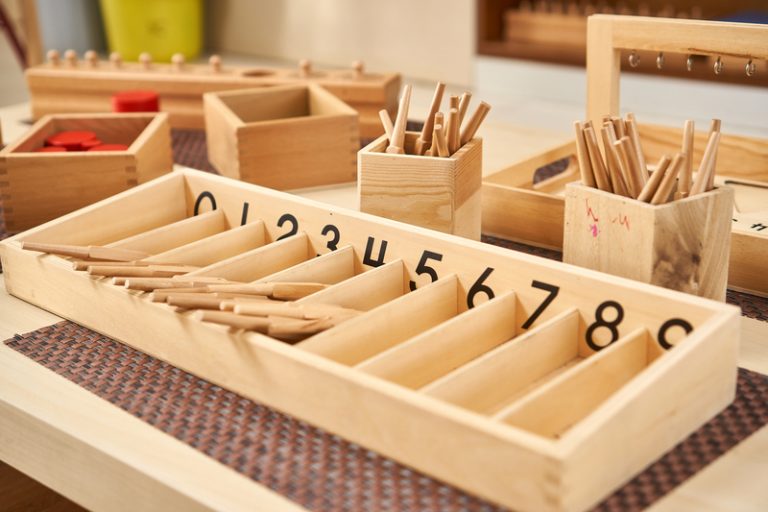
Montessori
Montessori Education was founded in 1907 by Dr. Maria Montessori. This form of education encourages learning through the five senses, rather than just through reading, writing, and listening.
Children learn at their own individual pace, from a wide range of activities they can choose from, in a child-friendly prepared environment.
Montessori education in schools relies heavily on specific materials and a Montessori curriculum, especially in the younger years. These materials can be very expensive, and home educators do not have access to the Montessori curriculum in Australia. However, none of this is necessary to provide children with a Montessori-inspired education. Montessori home education is more about applying the philosophy – the ideas, principles, and attitudes toward learning that are at the heart of Montessori.
The Montessori method follows the child, not interrupting their concentration and their interests, and where individual activities are the main thrust of the whole philosophy. A common Montessori phrase is “help me to do it by myself,” meaning that children need the chance to be independent but sometimes need guidance. Here are some of the core principles of Montessori Education.
- Children are capable of self-directed learning.
- It is important for the teacher to be an “observer” of the child instead of a lecturer. Observing the child is the basis for the continuing presentation of new material and avenues of learning.
- There are numerous “sensitive periods” of development, during which a child’s mind is particularly open to learning specific skills or knowledge. These skills are learned effortlessly and joyfully. Learning one of these skills outside of its corresponding sensitive period is certainly possible but can be difficult and frustrating.
- The child’s environment acts as a “third teacher”. When children are in environments that are stimulating, inspiring, and allow independence and choice, children will learn naturally and through discovery.
- Children most often learn alone during periods of intense concentration. During these self-chosen and spontaneous periods, the child is not to be interrupted by the teacher.
- The teacher/parent acts as a guide, mentor, and supporter of the child, not someone telling the child what to do. Children make choices about their learning and adults support them if they need it.
- Sensory and practical life experience is intimately connected to the developing brain in children. Children must be engaged in hands-on, sensory learning where they get to participate, do and try things, not just watch and listen.
Montessori Australia: https://montessori.org.au/
Montessori Education: https://montessori-nw.org/about-montessori-education
A Quick Overview of Montessori: https://www.youtube.com/watch?v=UzmvtVAuuyI
What is Montessori: https://amshq.org/About-Montessori/What-Is-Montessori
Fearless Homeschool: https://fearlesshomeschool.com/montessori-homeschool/
Montessori for Everyone Materials: https://montessoriforeveryone.com/

Reggio Emilia
The Scholastic website describes a Reggio approach as one that “views children as individuals who are curious about their world and have the powerful potential to learn from all that surrounds them.
Reggio teachers/parents employ strategies such as exposing children to a wide variety of educational opportunities that encourage self-expression, communication, logical thinking, and problem-solving.”
The articles below delve into more detail on Reggio Emilia concepts and values. Six of the main Reggio approach principles are:
* Children are capable of constructing their own learning.
* Children are collaborators and learn through interaction with their communities.
* Children are natural communicators and should be encouraged to express themselves however they feel they can.
* The child’s environment acts as the “third teacher”.
* Children work on short and long-term projects and adventures of their choosing.
* Teachers and parents are guides, nurturers, and partners with a child in their education.
Reggio Emilia Education (an excellent overview): https://www.youtube.com/watch?v=7n2hCebmT4c
Reggio Emilia Approach: https://www.reggiochildren.it/en/reggio-emilia-approach/
Reggio Emilia Overview: https://www.boldpark.com/our-approach/reggio-emilia/
What is the Reggio Emilia Approach to Homeschool: https://orisonorchards.com/reggio-emilia-approach/
5 Ways to Create a Reggio Emilia Homeschool: https://www.rootsandwingsfc.com/blog/2020/8/30/5-ways-to-create-a-reggio-inspired-home-schoolnbsp
Project-based Homeschooling: https://fearlesshomeschool.com/project-based-homeschooling/
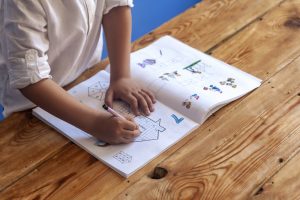
Purchased Curriculum
As Kelly George of Fearless Homeschooling says, “There’s a growing misconception that you need to purchase an Australian homeschooling curriculum in order to legally homeschool.
Let me make it clear: You do NOT need to buy a curriculum to homeschool.
Although there are a growing number of homeschooling curriculum providers in Australia, who will provide you with work for all subjects and assist with homeschooling registration, it is NOT mandatory to enroll with one of them. You can if you choose to, of course. But you definitely don’t HAVE to – and most homeschoolers choose to put together their own curriculum and resources so they can tailor it to their children and family.”
Having said that, some people (especially when starting out with home education) enjoy the security of using a commercial package that comes complete with ideas for delivery of information, assigned tasks for students to complete, and a structure for the assessment of student progress. The package may or may not allow access to teacher help from the supplier.
The links here are to curriculum packages that cover all or most subjects. There are many other curriculum resources for specific subject areas that can be found on our Resources page. Curricula relating to other approaches is listed under the particular approach. Please note too, that curriculum packages from other countries can be used in Australia, but you may need to cross-reference them with the Australian curriculum to show that the Australian curriculum is being covered.
Euka (formerly Complete Education Australia) : https://euka.edu.au/
Simply Homeschool: https://simplyhomeschool.com.au/
Homeschool in a Box: https://www.homeschoolinabox.com.au/
Skwirk: https://www.skwirk.com.au/
Cluey Learning: https://clueylearning.com.au/
Education Perfect: https://www.educationperfect.com/for-parents
Oak Meadow: https://www.oakmeadow.com/
Accelerated Christian Education (ACE): https://accelerate.edu.au/
Sonlight: https://www.sonlight.com/

Classical
The modern Classical Movement has been highly influenced by Dorothy Sayers, who investigated medieval education and explained that it was divided into two parts: the Trivium and the Quadrivium.
The Trivium is composed of three distinct learning ages, suited to a child’s mental development:
- Grammar Stage (ages 9-11) is the perfect age for teaching rote memorisation of facts. The learning of an ancient language, such as Latin or Greek, is suggested. The child will not necessarily understand all that he/she is memorising, but this is a foundation that will be built on.
- Dialectic (Logic) Stage (ages 12-14) sees the child being able to understand what he/she has already memorised and begin to reason and question what had been taught in the previous stage. The facts are now becoming fused together to create a bigger picture for the child, and the answers to the questions cement that foundation of knowledge through logical reasoning.
- Rhetoric Stage (ages 14-16) finds the child moving from asking endless questions to formalising what they have learned being better able to present them in a persuasive argument.
After moving through these three stages of learning, the student is now able to move on to the Quadrivium, which involves choosing a particular area of study to specialise in. They have been given the tools of learning and are now able to use their thinking skills and mental discipline to tackle difficult areas of study.
Classical Conversations: https://www.classicalconversations.com/classical-homeschool-curriculum/
The Homeschool Mom – Classical Education: https://www.thehomeschoolmom.com/definition-for-classical-education/
Fearless Homeschool – Classical Education: https://fearlesshomeschool.com/classical-education-ultimate-guide-homeschooling-styles/
The Well-trained Mind: https://welltrainedmind.com/
Homeschool Methods – Classical Education: https://thecanadianhomeschooler.com/homeschool-methods-classical-education/
Classical Academic Press: https://classicalacademicpress.com/pages/what-is-classical-education
Veritas Press: https://veritaspress.com/
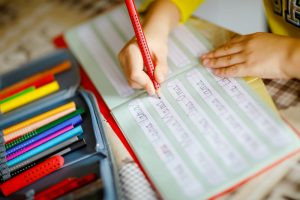
Structured Learning
Some families follow quite a routine framework, much the same as schools do. This good for children who are very methodical and thrive on the routine and security that a structured approach offers.
The day begins much the same as a school day, and progresses through the various subjects steadily, with appropriate breaks in between. The children have the benefit of one-on-one tuition (as all methods of home education provide), and various excursions and community groups can be used to enhance their educational program. Carefully selected texts or programs usually provide the basis for the selected program of work.
Purchased curriculum may be used in a structured approach, but there are many other programs and resources that families may choose to use for different subject areas too.
Keep in mind that it’s important to ensure that in a structured approach to home education, your child also has plenty of opportunities for social interaction, practical and hands-on learning too. People taking a structured learning approach utilise a wide range of resources. Exploring our Resources page is a great place to start searching for programs that might be helpful for you.
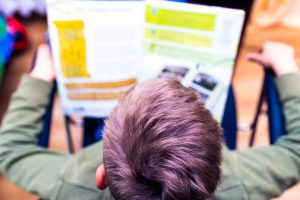
Lapbooking
This is a great form of learning for organising information graphically, especially for those learners who need visual reminders and prompts.
Lapbooking often involves, scrapbooking and pop-up book techniques incorporating lots of arts and crafts, stickers, colouring-in and cutting out.
Lapbooking is a form of preserving work learned, whilst being extremely visual, but it is displayed in a file folder (those coloured folders you buy for filing in filing cabinets), which has been folded into a different shape (called a shutterfold), and the contents are more hands-on, in that, there are mini-books to open, wheels to turn, and many other folds to add interest to the book. It is extremely visual, and fun for those children who truly enjoy cutting, pasting and colouring-in, and serves as a great tool for revision.
Lapbooking can actually be viewed as a tool for learning and revision rather than an approach, as lapbooks can be made about any topic learned through any educational philosophy.
Confessions of a Homeschooler – Lapbooking: https://www.confessionsofahomeschooler.com/blog/2019/04/what-is-a-lapbook.html
The Homeschool Mom – Lapbooks: https://www.thehomeschoolmom.com/homeschool-help/lapbooks/
Homeschool Share: https://www.homeschoolshare.com/
Homeschool Helper: https://homeschoolhelperonline.com/
Home to Homeschool for Free – Lapbooks: https://howtohomeschoolforfree.com/free-lapbook-notebook-resources/
Search “lapbook” on Youtube and Pinterest for practical demonstrations and lapbook ideas.
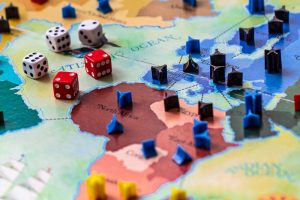
Gameschooling
“In the homeschool community, gameschooling means to use tabletop gaming in an intentional way, as part of your personal homeschool culture and educational philosophy.
Rather than playing games occasionally just for fun, gameschooling families see them as essential to their homeschool daily or weekly for a variety of reasons (including fun!).” – The Ultimate Guide to Gameschooling by Cat Timms.
Gameschooling is perhaps something that is part of a broader educational philosophy but it warrants a mention here because it’s such a wonderful way to enhance any approach for families who enjoy learning with games! People who include gameschooling in their home education program feel that, as Gameschool Community says, “some of the very best learning happens when we are relaxed, building relationships, and playing!”
The Ultimate Guide to Gameschooling
https://themulberryjournal.com/writing-collective/family-life/ultimate-guide-gameschooling
My Little Poppies
This website is an absolute treasure trove of ideas and resources on gameschooling.
https://my-little-poppies.com/
Gameschooling Australia Group
https://www.facebook.com/groups/gameschoolingoz/
Gameschool Community Group
https://www.facebook.com/groups/800144597526850/
Guide to Gameschooling: Learning through Play
https://thehomeschoolsisters.com/gameschooling/
How to Use Gameschooling for Homeschool
https://homeschooling4him.com/gameschooling/
A Compilation of Games for Learning
https://raisinglifelonglearners.com/games-in-your-homeschool/
The Surprising Benefits Your Kids Get From Playing Board Games
https://www.scholastic.com/parents/kids-activities-and-printables/activities-for-kids/arts-and-craft-ideas/benefits-board-games.html
14 Benefits of Playing Games as a Family
https://www.thedarkimp.com/blog/2020/03/19/14-benefits-of-playing-board-games-as-a-family/

